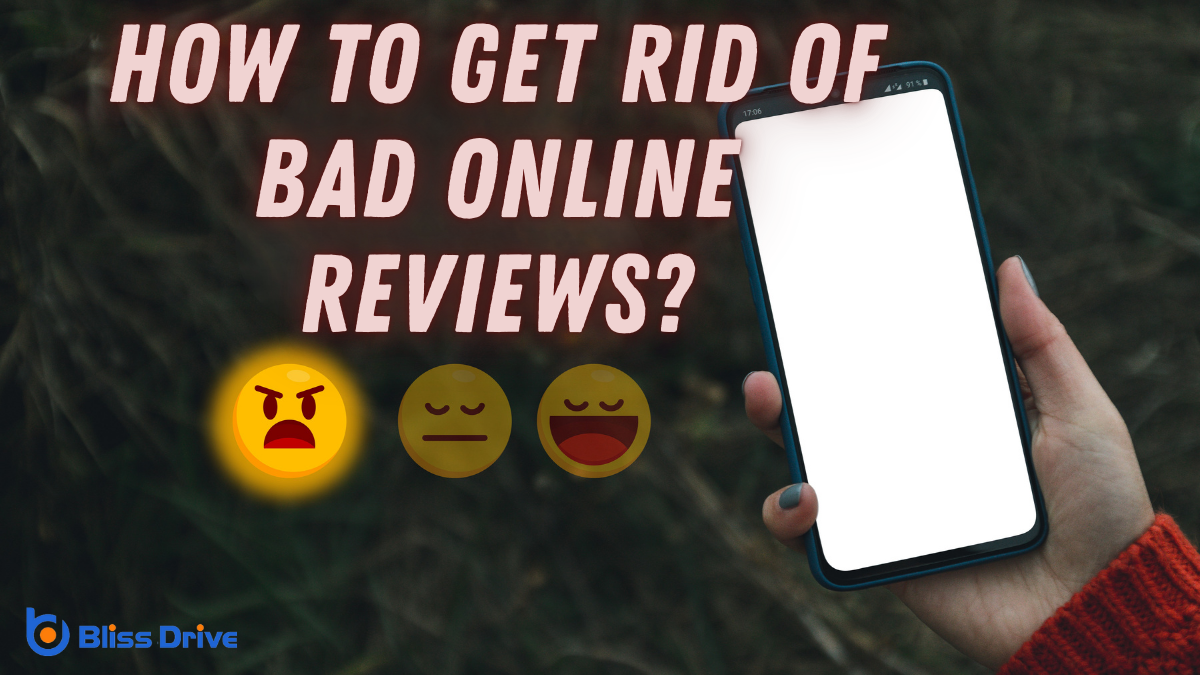Digital Marketing Services
Learn More About Us

I've been there—facing the sting of a bad online review that leaves you questioning your hard work. But before you panic, let's explore how to handle these reviews effectively. It's not just about damage control; it's about turning a potentially harmful situation into an opportunity for growth and customer loyaltyThe likelihood of customers to continue purchasing from a brand over time.. So, what's the first step in transforming these critiques into a win-win for both you and your customers?
Negative reviews can feel like a punch to the gut, especially when you've poured your heart into your business. I understand the frustration. Each negative comment can overshadow all the good, making you question your efforts.
Yet, these reviews hold valuable insights. They shine a light on areas needing improvement and provide a chance to reconnect with dissatisfied customers.
When I first received a harsh review, I felt defeated. But I soon realized its impact extends beyond my feelings. It affects potential customers' perceptions and can influence their decisions.
Instead of letting it linger, I chose to address the feedback. By doing so, I not only improved my services but also demonstrated a commitment to growth and customer satisfaction.

Keeping a close eye on your online reputation is vital if you want to maintain a positive image. I’ve learned that monitoring helps me catch potential issues before they escalate. By regularly checking platforms like Google, Yelp, and social media, I stay informed about what people are saying.
Setting up Google Alerts for my business name guarantees I get notified right away when new content appears. It’s important to look at both positive and negative feedback. Positive reviews highlight what I’m doing well, while negative ones point out areas for improvement.
I make it a habit to review my online presence weekly, making sure I’m aware of any changes. Taking these steps helps me stay proactive and keep my reputation strong.
When you see a negative review, it’s essential to acknowledge it quickly and show that you care.
Responding with a professional tone can help defuse tension and demonstrate your commitment to customer satisfaction.
Although it might be tempting to ignore a bad review, addressing it promptly and professionally can turn a negative situation into a positive opportunity.
Responding quickly shows you care about your customers' experiences and value their feedback. When I see a negative review, I make it a priority to acknowledge it as soon as possible.
This timely acknowledgment not only helps in managing potential fallout but also demonstrates a commitment to customer satisfaction. It’s essential to let the reviewer know their voice matters and that you're actively working to resolve any issues.
By doing this, you can often prevent the situation from escalating and potentially convert an unhappy customer into a loyal one.
While addressing negative reviews promptly is essential, maintaining a professional tone is equally important in fostering constructive dialogue.
When I respond to negative feedback, I focus on keeping the conversation calm and respectful. It's easy to let emotions take over, but staying professional helps defuse tension and shows that I value the customer's perspective.
I start by acknowledging the customer's concerns, expressing empathy, and offering a sincere apology if necessary. This approach sets a positive tone and demonstrates that I'm genuinely interested in resolving the issue.
I avoid using defensive or dismissive language, as it can escalate the situation. By maintaining a professional tone, I'm more likely to turn a negative experience into an opportunity for improvement and potentially regain trust.
Moving from maintaining a professional tone, let's focus on strategies that resolve issues effectively and efficiently.
When addressing a negative review, I always respond promptly. Timeliness shows you care about the customer’s experience and are keen to make things right.
I start by acknowledging the issue and expressing genuine empathy. This helps the reviewer feel heard and valued.
Then, I offerThe specific product or service being promoted by affiliates. a solution or invite the reviewer to discuss it privately, which can prevent further public negativity. Keeping the interaction professional and courteous is essential.
I avoid getting defensive or making excuses; instead, I focus on finding a resolution.
When facing a negative online review, it's essential to respond thoughtfully and constructively to manage your reputation effectively.
I always start by acknowledging the customer’s experience. A simple, “Thank you for your feedback,” sets a respectful tone. I aim to empathize, saying something like, “I’m sorry you'd this experience,” to show genuine concern.
Then, I address specific issues mentioned, demonstrating that I've read and understood their concerns.
I make sure to keep my response brief and to the point, avoiding any defensive language. Remember, the goal is to show you value their opinion and are willing to improve.
Finally, I invite them to continue the conversation privately, offering a direct contact method to resolve the issue further.

Now that we’ve crafted the ideal response, let's focus on transforming a negative interaction into a positive opportunity. You might wonder how this is possible. By shifting your mindset and actions, you can change the narrative.
Here’s how I do it:
Isn't it wonderful when your efforts are recognized with positive reviews? I've found that encouraging customers to share their positive experiences can make a significant difference.
First, I always guarantee I'm delivering exceptional service. Happy customers are more likely to leave glowing feedback when their expectations are exceeded. I gently remind them how much a review would mean to my business. Sometimes, a simple request at the end of a satisfactory interaction does the trick.
Additionally, I make the review process easy. Providing clear instructions or direct links can remove barriers. I also express gratitude for every positive review, reinforcing the value of their feedback.
When I read through customer feedbackInformation provided by customers about their experience with a product or service, used to improve ..., I focus on identifying common concerns that repeatedly surface.
This helps me understand what needs improvement and allows me to make constructive changes that enhance the overall experience.
Although receiving negative online reviews can be disheartening, they offer valuable insights into common concerns that customers face.
By analyzing these reviews, I can identify patterns and areas for improvement. Here are some frequent issues that customers might mention:
Taking action based on customer feedback is essential for turning negative reviews into opportunities for improvement. When I read a critical review, I see it as a valuable lesson. Each piece of feedback helps me understand what changes are needed to enhance my business.
By addressing specific complaints, I can make targeted improvements that benefit everyone. I focus on patterns in reviews to identify recurring issues. Once I know where to improve, I implement changes promptly.
Whether it’s adjusting customer service protocols or refining a product, these steps show my commitment to quality. I don’t just listen—I act. When people see I'm willing to grow and change, they’re more likely to give my business another chance.
Understanding and acting on feedback builds trust.

To effectively counteract bad online reviews, tapping into the power of your loyal customers can be a game-changer.
These advocates willingly share positive experiences, helping to drown out negativity. Here's how you can leverage their loyalty:
While loyal customers can bolster your reputation, addressing the root causes of negative reviews is equally important.
I've learned that making tangible changes based on customer feedback is critical. When I read a negative review, I don't just see it as criticism; I see it as an opportunity to improve. By carefully analyzing the issues mentioned, I can identify patterns or areas needing attention.
For example, if multiple reviews mention slow service, I prioritize optimizing those processes. I reach out to my team, discuss potential solutions, and implement changes promptly.
This proactive approach not only improves my business but also shows customers that their opinions matter. It demonstrates commitment to quality, turning critics into advocates and ultimately reducing negative reviews over time.
When I want to tackle bad online reviews effectively, I turn to reputation management tools.
These tools help me monitor online mentions, automate response strategies, and analyze sentiment trends, giving me valuable insights into customer feedback.
As a business owner, you should actively monitor online mentions to guarantee your reputation remains intact.
This proactive approach helps you catch potential issues before they escalate. Utilizing reputation management tools is essential for keeping tabs on your online presence.
Here’s how you can effectively monitor mentions:
Implementing automated response strategies can greatly enhance how your business manages online reviews. By using reputation management tools, you can swiftly address negative feedback and demonstrate your commitment to customer satisfaction.
These tools allow you to set up pre-written responses that get automatically sent out, guaranteeing no review goes unnoticed. This approach not only saves time but also maintains consistency in how you interact with your customers.
Imagine receiving a negative review and having a well-crafted response sent within minutes. It shows professionalism and can often de-escalate situations before they worsen.
However, it’s crucial to periodically review these automated responses to verify they remain relevant and genuine. Personal touches can still be added manually when necessary, enhancing the effectiveness of your strategy.
Analyzing sentiment trends is a powerful way to understand the overall perception of your brand. By utilizing reputation management tools, I can identify patterns in customer feedback and make informed decisions. These tools provide valuable insights, helping me address issues before they escalate.
Here’s how they benefit:
Using these insights, I can proactively manage and improve my brand’s reputation.
In dealing with bad online reviews, I've learned that quick, empathetic responses make a big difference. By addressing concerns directly and inviting further discussion, I can often turn things around. Encouraging happy customers to share their positive experiences is key, too. I regularly monitor feedback, using it as a tool for growth and improvement. With the right approach and tools, I can protect my online reputation and show I'm dedicated to customer satisfaction.
